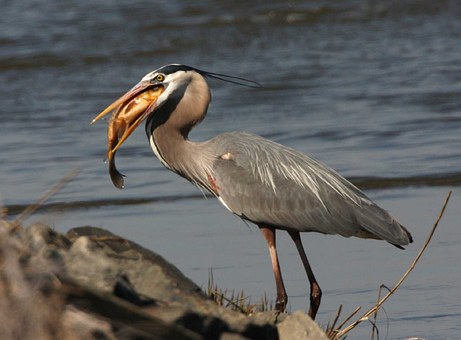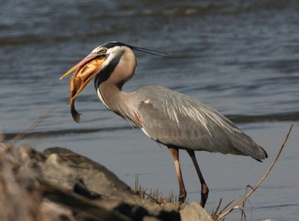Dailycsr.com – 08 February 2017 – Talking about “world’s most productive ecosystems”, one cannot leave out wetlands besides coral reefs and rain forests. In order to acknowledge the “World Wetlands Day”, many sites of General Motors that either support or feature wetlands, have shared about their work towards increasing bio-diversity.
The company takes “special” care and attention for preserving the lands on which it function, whereby it is now maintaining sixty three “certified wildlife habitat programs” besides “5,000 acres of habitat”. Some of the wetlands at General Motor’s facilities shelter “native plant and animal species” and in turn prevents the surrounding land from being flooded.
General Motors, however, talks about some of the wetlands that are managed by the company.
To begin with “Vauxhall Ellesmere Port” of England, situated in a wooded surrounding, houses “three natural freshwater wetlands”. The site originally took shape in the year of 1962, when it used to be a reservoir for putting out “fires”. Sometimes after the “mid-1970s”, it was “left undisturbed” and the native flora got a chance to flourish unhampered. Furthermore, during that time, for every workers who worked on the site, one tree was planted, whereby creating “Hooton Woods on the grounds”.
Slowly, the wildlife in the area began to increase. As the result of which an ecosystem that provided “food, water, cover and space for local species” was restored.
In Canada’s “Woodstock Customer Care and Aftersales” trees encompass the wetland, as the employees work to sustain the balance in the ecosystem. Moreover, they also “installed nesting boxes” which provides a place to the surrounding fauna to take refuge, “lay eggs and raise fledglings”.
Another of GM’s wetland is situated in Michigan, under the name of “Saginaw Metal Casting Operations”, which features a “small stream system”. The said system had been designed for a “demonstration project” of filtering “300 to 3,000 gallons of water” that came out as “sanitary wastewater” from the “nearby office buildings” on a daily basis. The initial treatment took place in a bog which then flowed into “an aerated stream”. Additionally, General Motors adds:
“Amphibians take advantage of the islands. There’s also an artificial waterfall and small pond whose fish and insects help cut algae growth and vegetation. The team built a bridge and boardwalk using sustainable wood to enhance the site’s watershed education activities. The system is effective in treating the wastewater while providing habitat”.
Other such wetlands under General Motor’s maintenance are “Customer Care and Aftersales Headquarters” in Michigan, “Lansing Delta Township Assembly” in Michigan, “Spring Hill Manufacturing” in Tennessee and “Ramos Arizpe” in Mexico to mention a few.
According to General Motors:
“Companies can play a role in advancing sustainability ecosystems. Through habitat restoration and preservation efforts, GM seeks to support the United Nations’ Sustainable Development Goal to halt biodiversity loss. As part of that commitment, the company collaborates with employees and community members on how they too can have an impact on their local ecosystems”.
References:
ethicalperformance.com
The company takes “special” care and attention for preserving the lands on which it function, whereby it is now maintaining sixty three “certified wildlife habitat programs” besides “5,000 acres of habitat”. Some of the wetlands at General Motor’s facilities shelter “native plant and animal species” and in turn prevents the surrounding land from being flooded.
General Motors, however, talks about some of the wetlands that are managed by the company.
To begin with “Vauxhall Ellesmere Port” of England, situated in a wooded surrounding, houses “three natural freshwater wetlands”. The site originally took shape in the year of 1962, when it used to be a reservoir for putting out “fires”. Sometimes after the “mid-1970s”, it was “left undisturbed” and the native flora got a chance to flourish unhampered. Furthermore, during that time, for every workers who worked on the site, one tree was planted, whereby creating “Hooton Woods on the grounds”.
Slowly, the wildlife in the area began to increase. As the result of which an ecosystem that provided “food, water, cover and space for local species” was restored.
In Canada’s “Woodstock Customer Care and Aftersales” trees encompass the wetland, as the employees work to sustain the balance in the ecosystem. Moreover, they also “installed nesting boxes” which provides a place to the surrounding fauna to take refuge, “lay eggs and raise fledglings”.
Another of GM’s wetland is situated in Michigan, under the name of “Saginaw Metal Casting Operations”, which features a “small stream system”. The said system had been designed for a “demonstration project” of filtering “300 to 3,000 gallons of water” that came out as “sanitary wastewater” from the “nearby office buildings” on a daily basis. The initial treatment took place in a bog which then flowed into “an aerated stream”. Additionally, General Motors adds:
“Amphibians take advantage of the islands. There’s also an artificial waterfall and small pond whose fish and insects help cut algae growth and vegetation. The team built a bridge and boardwalk using sustainable wood to enhance the site’s watershed education activities. The system is effective in treating the wastewater while providing habitat”.
Other such wetlands under General Motor’s maintenance are “Customer Care and Aftersales Headquarters” in Michigan, “Lansing Delta Township Assembly” in Michigan, “Spring Hill Manufacturing” in Tennessee and “Ramos Arizpe” in Mexico to mention a few.
According to General Motors:
“Companies can play a role in advancing sustainability ecosystems. Through habitat restoration and preservation efforts, GM seeks to support the United Nations’ Sustainable Development Goal to halt biodiversity loss. As part of that commitment, the company collaborates with employees and community members on how they too can have an impact on their local ecosystems”.
References:
ethicalperformance.com


 General Motors’ Contribution To ‘Halt Biodiversity Loss’
General Motors’ Contribution To ‘Halt Biodiversity Loss’





 Companies
Companies